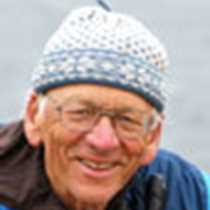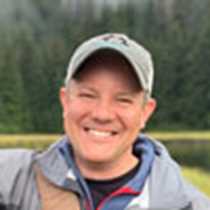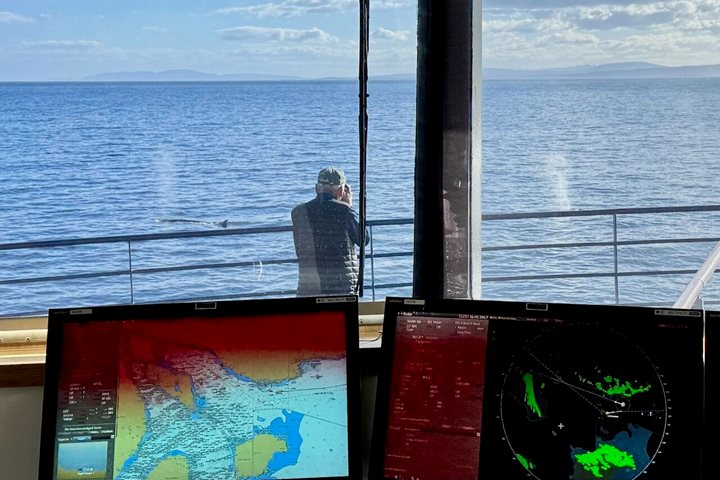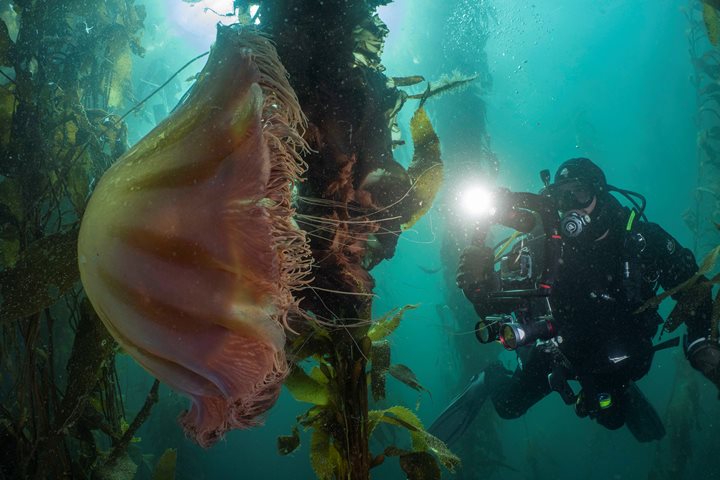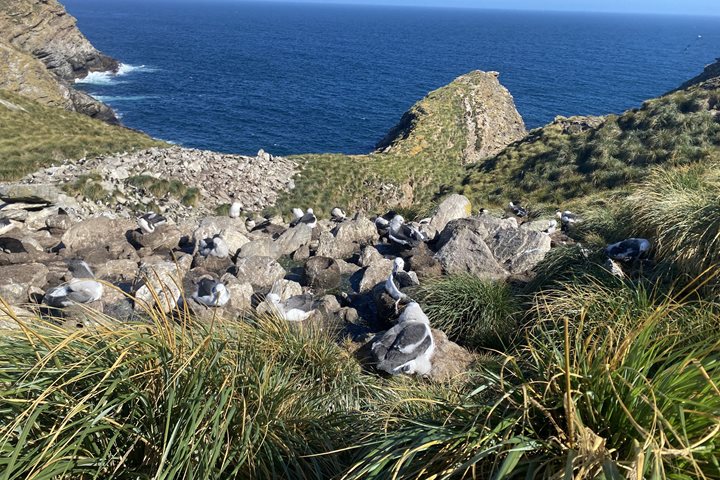During the night, we made our way around the western corner of the main island of South Georgia. A brisk northwesterly wind roughed up the seas but most on board did not notice as they slumbered. By morning, we were off the wide mouth of the only bay along the south side of South Georgia where landing is permitted.
King Haakon Bay—named after King Haakon VII of Norway— is surrounded by rugged peaks and ridges where numerous glaciers originate, flowing down the valleys and terminating in the waters of the bay. At the very end of the fjord, there are two expansive glaciers. The southernmost terminates in the water, creating some of the icebergs floating around. The more western of the glaciers is historically significant. The entire bay was named by Norwegian whaler Carl Anton Larsen, founder of Grytviken, a main whaling station.
Along the shores of the end of the bay, a prominent bluff rises directly out of the rocky shoreline. This feature, called Peggotty Bluff, was officially recognized in 1955-56 by the South Georgia Survey as the location where Sir Ernest Shackleton’s party landed and camped after crossing from Elephant Island. In May of 1916, Shackleton’s party landed first at Cave Cove, briefly staying there before going further into the bay. From there, a party of three proceeded to cross up the glacier at the head of the bay and miraculously cross the mountains and glaciers to the Stromness whaling station on the other side: a classic epic of adventure, exploration, survival, and leadership.
Our morning was bathed in glorious sunshine once the clouds cleared. Naturalists guided walks inland and through the flat tussock-covered plain behind the beach. Some stayed along the beach just watching or photographing the behavior of the breeding southern elephant seals: large bulls still defending, or, at least, trying to defend their amassed females; and young pups nursed in the mayhem of the piles of animals. Across the plain and down the coast, there were a few small groups of king penguins. Some had just finished molting, while others were in the process. A few of the more energetic in our group hiked to the base of a nearby glacier.
It was a perfect place to finish off our time in South Georgia. On the way out of the main bay, the Captain passed close by Cave Cove, so we could see where Shackleton’s small boat, the James Caird, first landed—a small speck on a beach in the big Southern Ocean. Then we were off toward the Falklands. We spent the afternoon resting, viewing photographs from the morning ashore, and listening to presentations by the ship’s staff. As the sunlight faded, the shape of an amazing geography and wildlife haven receded behind the stern of the National Geographic Explorer.



